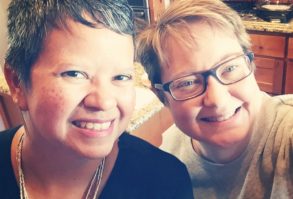Today, I read an article by the new White House Chief Digital Officer, Jason Goldman (@goldman). His role, he says in his article The Internet, The White House and You (and Me) is,, “to help create more meaningful online engagement between government and American citizens.”
Then Goldman asks for the American citizen’s help:
Here’s what I would love. I would love for you to answer this question: How can we — our government and you and your communities — better connect online to make America better? This isn’t about agreeing or disagreeing about a particular policy. This is thinking through how we want our government to engage with us and how willing we are to participate in that conversation.
Throughout my time learning and studying the online digital strategies that the federal government uses to rhetorically connect–this is a smart and logical way that the government can connect with citizens–is by asking. Henry Jenkins writes in his book Convergence Culture: Where Old and New Media Collide:
If we want to bridge between red and blue America, we need to find that kind of common ground and expand upon it. We need to create a context where we listen and learn from one another. We need to deliberate together. (pg. 250)
This is exactly what Goldman is asking for. Find a common ground and deliberate together. Wouldn’t that be more rhetorically impactful than reacting to a situation online without listening? But is this ideal possible?
The rhetorical impact that social media has had on public opinion has created a hard to navigate, noisy venue in many cases. To sift through social media to find the conversation is hard. Many people just give up trying to understand. The Pew Research Center found that when people talk politics it creates polarized crowds.
Polarized Crowd: Polarized discussions feature two big and dense groups that have little connection between them. The topics being discussed are often highly divisive and heated political subjects. In fact, there is usually little conversation between these groups despite the fact that they are focused on the same topic. Polarized Crowds on Twitter are not arguing. They are ignoring one another while pointing to different web resources and using different hashtags.
Goldman’s goal is a lofty goal, but one of importance so that the federal government can create meaningful connections between citizen and government. No other time in history has technology allowed us to have a conversation with our political figures with ease. Not only is it possible that the White House can talk directly to citizens and vice versa, but now citizens can talk to citizens beyond the borders of the community one physically lives in. Both local and federal governments can talk to citizens directly, bypassing the media as the middle man. Presidential campaigns are now announced on Twitter or YouTube. The app MeerKat is making live streaming possible for the average person. Citizens are no longer consumers, but prosumers. As long as you have a smart phone in your hand, you are your own communication hub.
So, how can we create a better online connection between government and citizen?
- Continue experimenting with new technology. Be fearless–emerging technology is just that–emerging. Just like how the Twitter hashtag was organically born through Twitter’s users, allow for that organic growth to occur.
- Create connections between academics and practitioners in digital engagement.
- I agree with Ananda Leeke when she suggested a #SocialCivics Roundtable or a Committee that creates a knowledge base. Crowdsource (as Goldman is using with #SocialCivics) and tap into the collective knowledge of citizens who truly want to engage in the process.
- I always tell my students to tweet with intention. A well-designed website is only as good as the well-written content that is provided. Even if you want people to agree to disagree, to do so, messages and goals need to be clear.
- The White House holds many social media meetups during the year. The State of the Union is one of largest meetups of the year. I still keep in touch with some of the folks I met the night of the #SOTUSocial. The White House knows who participates. The White House chose social media leaders whose focus is on public engagement. Use them.
- For the digital citizen: To create less polarized conversations, digital citizens need to become more respectful of differing opinions. The screen allows us to hide behind the words we type. But, if you want to take part in the conversation and be heard–remember to state your opinion with the respect you would appreciate in return.
The ideas for #socialcivics are numerous and the needs of what citizens will want will vary. All I hope for is that people realize that words matter both online and offline. To sound credible one must be logical. To be passionate is fine, but when we cross over into too many emotions, our message is lost. I hope one day this new emerging technology will allow citizens to understand that communicating online is just as important as it is offline–and that a digital citizen means clear, well-thought out messages will be followed by clear, well-thought out responses.
The polarized conversations take place offline as well. Merging offline engagement with online engagement will help strengthen the communication and hopefully allow online conversations to become less polarized. As long as the White House, under whatever administration, seeks out improvement in civic engagement, I believe improvement will be found. It might emerge slowly, but seeking out better ways to communicate is always a great way to start a conversation.
Follow @goldman’s discussion on #socialcivics on Twitter:




2 comments On #SocialCivics: A Challenge for the Digital Citizen
Brilliant!!!!!!!
Thank you Ananda!